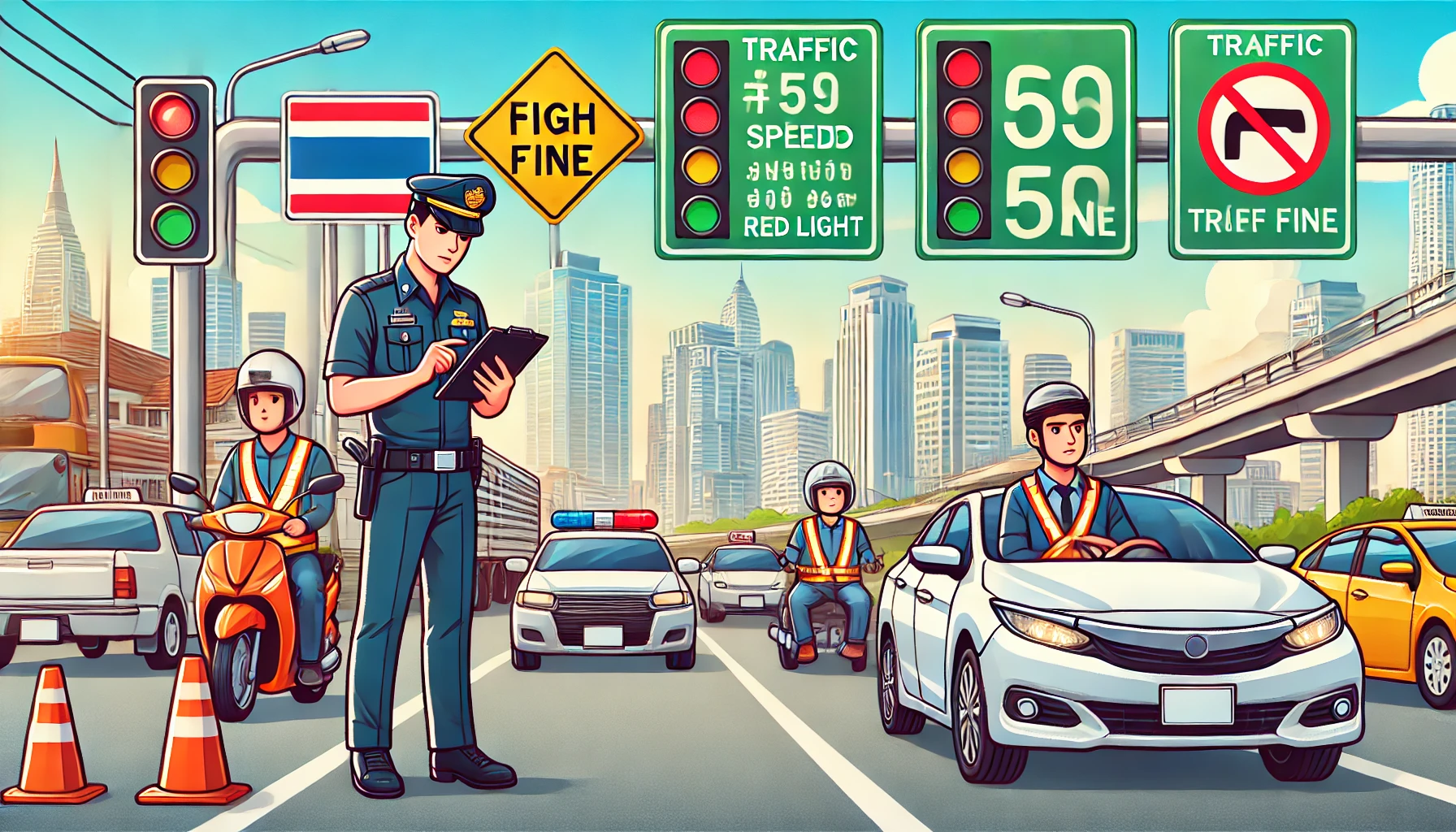Report on New Traffic Fines and the Traffic Situation in Thailand
Thailand has recently introduced stricter traffic laws, with significantly higher fines for various types of violations. The purpose of these measures is to reduce the high number of traffic accidents in the country, which has long been one of the most accident-prone in the world. Below is an overview of the new fines and statistics that highlight the dangers of traffic in Thailand.
Examples of Updated Fines
- Speeding and Running Red Lights: The penalty has been increased to fines of up to 4,000 baht.
- Failure to Stop at Pedestrian Crossings: Fines have also been raised to 4,000 baht, a step to protect pedestrians.
- Not Wearing a Seatbelt: For both drivers and passengers, the fine is now 2,000 baht.
- Not Wearing a Motorcycle Helmet: This offense also results in a fine of 2,000 baht.
- Driving Without a Valid License: Punishable by a fine of up to 1,000 baht or imprisonment of up to one month. If the driver fails to carry their license, a fine of 2,000 baht may be issued.
- Using a Mobile Phone While Driving Without Hands-Free Equipment: Can lead to fines of up to 4,000 baht.
- Drunk Driving: A first offense can result in imprisonment of up to one year and fines between 5,000 and 20,000 baht.
These updates are part of a broader reform of Thailand’s traffic laws, now emphasizing traffic safety and responsibility.
Traffic Accidents in Thailand: Statistics and Facts
Thailand is notorious for its dangerous roads and has, over the years, topped lists of the most accident-prone countries in the world. According to the World Health Organization (WHO), Thailand has one of the highest traffic-related death rates, with approximately 32.7 deaths per 100,000 inhabitants. This makes the country one of the most hazardous places to drive, especially for tourists who are unfamiliar with the often chaotic traffic patterns.
Some of the most common causes of traffic accidents in Thailand include:
- Speeding: A contributing factor to many serious accidents.
- Alcohol Consumption: A significant portion of traffic accidents involves drivers under the influence of alcohol.
- Lack of Safety Practices: Such as not wearing helmets on motorcycles.
According to data from various studies and reports, several measures, such as increased checkpoints and traffic safety campaigns, have been implemented to combat these issues. Despite these efforts, challenges remain, and the country still ranks high on the list of the most dangerous places to drive globally.
International Warning to Tourists
Due to its high accident rates and often unpredictable traffic environment, Thailand has warned tourists to be especially cautious when driving in the country. Foreign authorities, including British and American embassies, advise their citizens to avoid driving themselves and instead use public transportation or hire professional drivers.
It is clear that while laws are being tightened and measures are being implemented to improve traffic safety, long-term efforts and better enforcement will be needed to achieve real change.
news via inbox
stay informed







